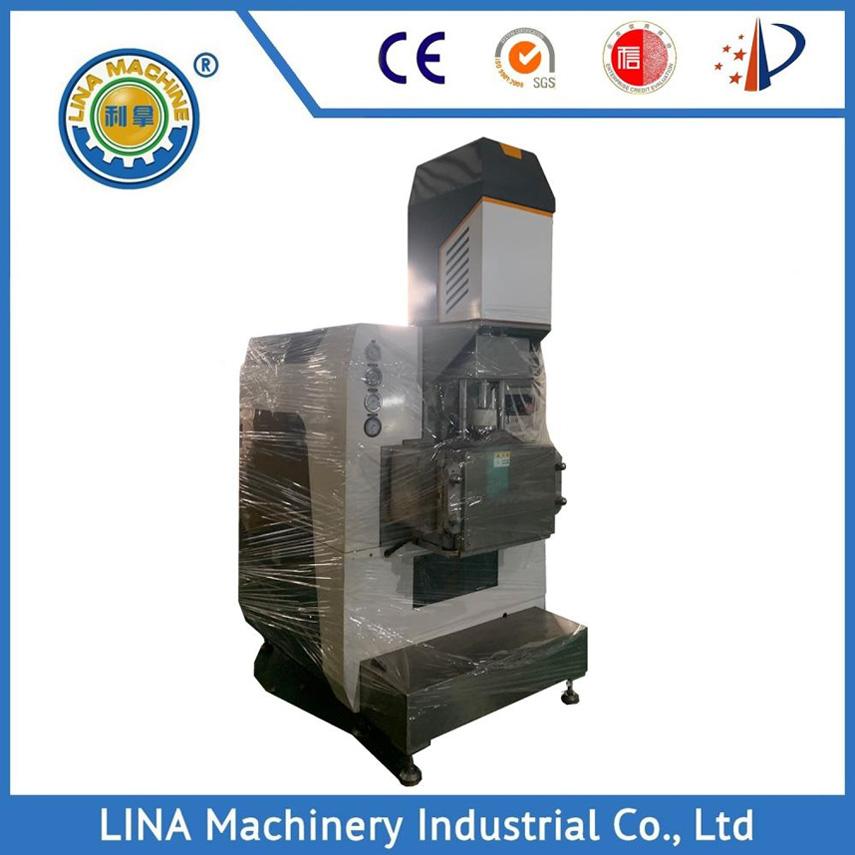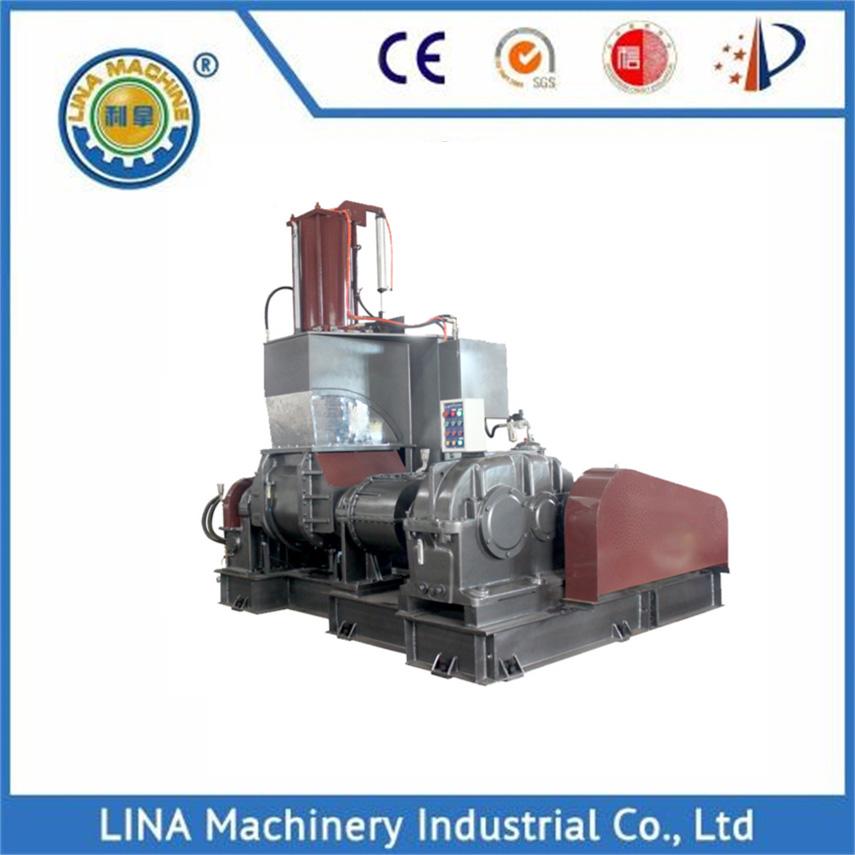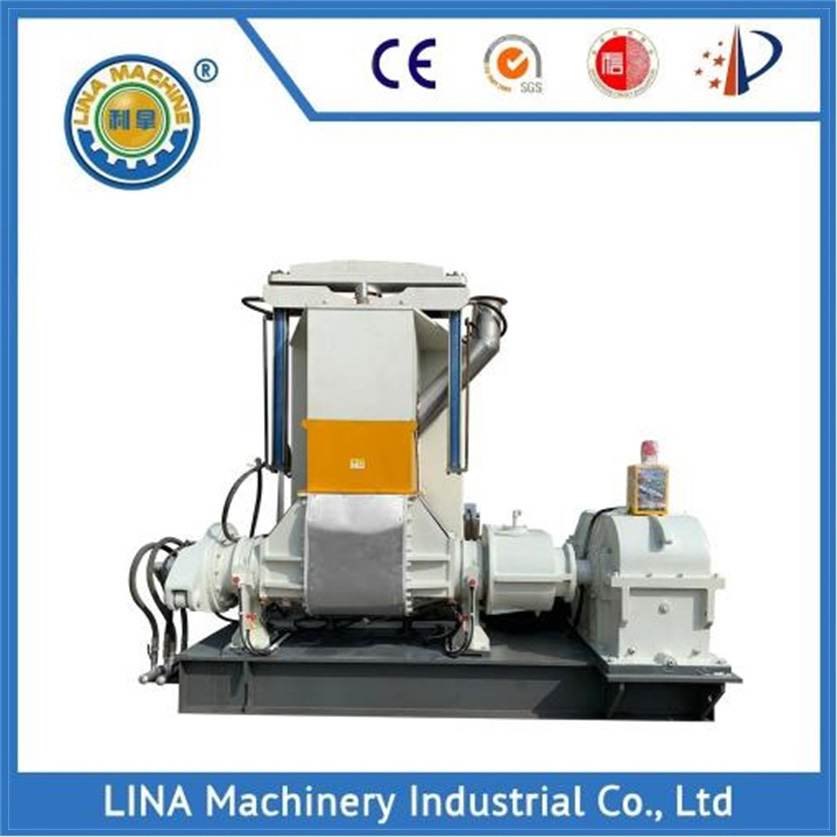




The primary purpose of a 4 Roll Calender is to process materials into sheets or films of uniform thickness and surface texture. Here's a basic overview of how it works:
Feeding: The material to be processed is fed into the calender machine, usually in the form of a continuous web or sheet.
Pre-heating: In some cases, the material may be pre-heated before entering the calender to make it more pliable and easier to work with.
Rolling: As the material passes through the machine, it comes into contact with the rotating rollers. The pressure exerted by the rollers compresses the material and helps to smooth out any irregularities in thickness.
Cooling: After passing through the rollers, the material may be cooled using water or other cooling methods to set its shape and improve its mechanical properties.
Take-up: Finally, the processed material is wound onto a take-up reel or cut into individual sheets, depending on the specific requirements of the application.
The number of rolls in a Four Roll Calender can vary depending on the desired level of processing and the properties of the materials being used. Machines with more rolls can provide greater control over thickness and surface finish, but they may also be more complex and expensive to operate.
4 Roll Calender Machine are widely used in industries such as plastics manufacturing, textile production, papermaking, and metalworking to produce high-quality finished products with precise specifications.
Main features:
1. The 4 rolls are separately driven by 4 DC motors, which allow a wide rang of speed adjustment. The rotating speed ratio of the 4 rolls can be freely adjusted. The rolls are equipped with pre-loading device and bearings lubrication failure alarm device, as well as nip display and speed display.
2. The rolls are made of chilled cast iron with vanadium and titanium alloys. The roll face is hard and anti-wear. To heat up or cool down, the rolls are either circumferentially drilled or centrally bored so as to make temperature well proportioned on the roll surface.
3. The rolls are arranged in S form. Roll 1# and roll 4# have roll cambers that can eliminate bending impact on rolls during working process. Thus, it is possible to make products with same thickness along axial direction.
4. The transmission system adopts a hard facing gear reducer, which has a compacted structure with higher transmission efficiency, lower noise and longer service life.
5. The 4 Roll Calender Machine is equipped with emergency device. When an emergent accident occurs, the calendar will be immediately stopped to open the roll space so as to protect the operator and equipment.





4 Roll Rubber Calender Machine
4 Roll Calender Machine is primarily used in the rubber industry for processing rubber compounds into sheets or other desired shapes. It applies pressure and heat to the rubber compound to achieve the
TAG: 4 Roll Calender Machine,4 Roll Rubber Calender Machine,4 Roll Calender,Four Roll Calender
Description
4 Roll Rubber Calender Machine is a type of industrial equipment used for various processes involving materials such as plastics, textiles, paper, or metals. The 4 Roll Calender consists of four cylindrical rollers arranged in a vertical or horizontal configuration, each of which can rotate independently. These rollers are typically heated and may have different surface finishes depending on the specific application. The primary purpose of a 4 Roll Calender is to process materials into sheets or films of uniform thickness and surface texture. Here's a basic overview of how it works:
Feeding: The material to be processed is fed into the calender machine, usually in the form of a continuous web or sheet.
Pre-heating: In some cases, the material may be pre-heated before entering the calender to make it more pliable and easier to work with.
Rolling: As the material passes through the machine, it comes into contact with the rotating rollers. The pressure exerted by the rollers compresses the material and helps to smooth out any irregularities in thickness.
Cooling: After passing through the rollers, the material may be cooled using water or other cooling methods to set its shape and improve its mechanical properties.
Take-up: Finally, the processed material is wound onto a take-up reel or cut into individual sheets, depending on the specific requirements of the application.
The number of rolls in a Four Roll Calender can vary depending on the desired level of processing and the properties of the materials being used. Machines with more rolls can provide greater control over thickness and surface finish, but they may also be more complex and expensive to operate.
4 Roll Calender Machine are widely used in industries such as plastics manufacturing, textile production, papermaking, and metalworking to produce high-quality finished products with precise specifications.
Main features:
1. The 4 rolls are separately driven by 4 DC motors, which allow a wide rang of speed adjustment. The rotating speed ratio of the 4 rolls can be freely adjusted. The rolls are equipped with pre-loading device and bearings lubrication failure alarm device, as well as nip display and speed display.
2. The rolls are made of chilled cast iron with vanadium and titanium alloys. The roll face is hard and anti-wear. To heat up or cool down, the rolls are either circumferentially drilled or centrally bored so as to make temperature well proportioned on the roll surface.
3. The rolls are arranged in S form. Roll 1# and roll 4# have roll cambers that can eliminate bending impact on rolls during working process. Thus, it is possible to make products with same thickness along axial direction.
4. The transmission system adopts a hard facing gear reducer, which has a compacted structure with higher transmission efficiency, lower noise and longer service life.
5. The 4 Roll Calender Machine is equipped with emergency device. When an emergent accident occurs, the calendar will be immediately stopped to open the roll space so as to protect the operator and equipment.
| Model | LN-4l(F)1120 | LN-4l(F)1400 | LN-4l(F)1600 | LN-4l(F)1600 | LN-4l(F)1730 | LN-4l(F)1830 | LN-4l(S)1220 | LN-4l(S)1250 | LN-4l(S)1730 | LN-4l(S)2030 | LN-4l(S)2300 |
| Roll diameter x length | 360x1120 | 400x1400 | 560x1600 | 610x1730 | 610x1730 | 610x1830 | 400x1220 | 450x1250 | 610x1730 | 660x2030 | 710x2300 |
| middle roll liner speed (m/min) | 2月20日 | 2.5-25 | 3.5-30 | 5.4-54 | 6-60 | 3月30日 | 3.5-35 | 3.5-35 | 5-50 | 5-50 | 5-50 |
| min thickness of sheet (mm) | ≥0.20 | ≥0.20 | ≥0.20 | ≥0.20 | ≥0.20 | ≥0.20 | ≥0.20 | ≥0.20 | ≥0.20 | ≥0.20 | ≥0.20 |
| Calendering width (mm) | 900 | 1200 | 1400 | 1500 | 1600 | 1000 | 1000 | 1000 | 1500 | 1800 | 2000 |
| Motor power (KW) | 55 | 75 | 144 | 160 | 67x4 | 22x4 | 37x4 | 37x4 | 75x2 | 110x4 | 132x4 |
| 90x2 | |||||||||||
| Machine weight(kg) | 13000 | 18000 | 45000 | 64000 | 68000 | 25000 | 30000 | 33000 | 65000 | 73000 | 82000 |
| Dimensions | 6040x2100x1625 | 6350x2150x2490 | 6270x2960x4100 | 6040x2100x1625 | 6750x3040x1743 | 5528x3300x3600 | 6025x3300x3800 | 6025x3300x3800 | 8010x4738x4837 | 8850x5080x5210 | 8850x5050x5210 |





